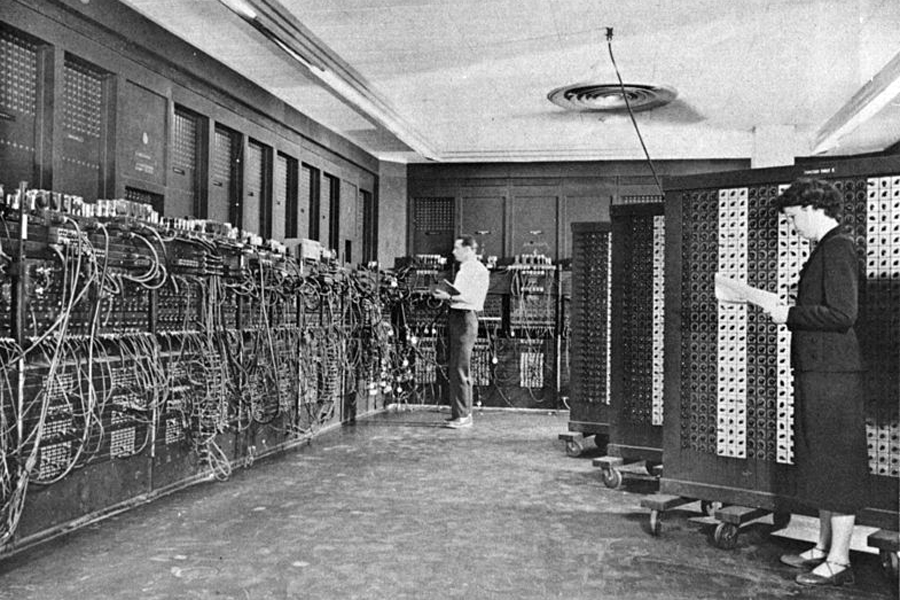The first successful commercial computer, ENAIC, was programmed by a University of Pennsylvania (UPenn) group known as "The First Programmers Club". The painstaking work calculating and testing processes for every inch of the 80-foot computer was not only an impressive computing feat, but one that broke down barriers: the programming group was entirely comprised of women, with Betty Holberton at the helm. Ms. Holberton faced her share of discouragement, despite showing promise while studying math as an undergraduate at UPenn – on the first day of class her mathematics professor asked if she wouldn't be better off at home raising children. But when World War II rolled around, Holberton was hired by the US Army along with 70 other women to calculate ballistics trajectories at the Army's base on UPenn's campus. Soon computer scientists working on ENAIC at UPenn realized they could use the help of several of these women to program the recently-built computer, and Holberton was one of those charged with the task. After successfully programming ENAIC, Holberton went on create numeric controls for UNIVAC (one of the first general-use computers), and helped develop COBOL with Grace Hopper, and FORTRAN, another computer language. She died in 2001, after being awarded the Ada Lovelace Award, among other honors.
 Mark Sappenfield
Mark Sappenfield
Dear Reader,
About a year ago, I happened upon this statement about the Monitor in the Harvard Business Review – under the charming heading of “do things that don’t interest you”:
“Many things that end up” being meaningful, writes social scientist Joseph Grenny, “have come from conference workshops, articles, or online videos that began as a chore and ended with an insight. My work in Kenya, for example, was heavily influenced by a Christian Science Monitor article I had forced myself to read 10 years earlier. Sometimes, we call things ‘boring’ simply because they lie outside the box we are currently in.”
If you were to come up with a punchline to a joke about the Monitor, that would probably be it. We’re seen as being global, fair, insightful, and perhaps a bit too earnest. We’re the bran muffin of journalism.
But you know what? We change lives. And I’m going to argue that we change lives precisely because we force open that too-small box that most human beings think they live in.
The Monitor is a peculiar little publication that’s hard for the world to figure out. We’re run by a church, but we’re not only for church members and we’re not about converting people. We’re known as being fair even as the world becomes as polarized as at any time since the newspaper’s founding in 1908.
We have a mission beyond circulation, we want to bridge divides. We’re about kicking down the door of thought everywhere and saying, “You are bigger and more capable than you realize. And we can prove it.”
If you’re looking for bran muffin journalism, you can subscribe to the Monitor for $15. You’ll get the Monitor Weekly magazine, the Monitor Daily email, and unlimited access to CSMonitor.com.







